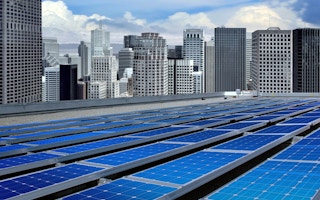Countries around the world can move their economies onto a path that cuts net emissions of climate-changing gases to zero at an affordable cost but they should start now, the World Bank said.
The latest science says the world needs to reach zero net emissions by 2100 to stabilise global warming at about 2 degrees Celsius above pre-industrial levels, agreed by governments as the maximum acceptable, the bank said in a report on Monday.
Zero net emissions means that no more greenhouse gases would be released into the atmosphere than can be absorbed by natural carbon sinks - oceans, forests and other vegetation.
“
Choices made today can lock in emissions trajectories for years to come and leave communities vulnerable to climate impacts. We will help support robust decisions when we can.
Rachel Kyte, World Bank Group’s special envoy for climate change
“Choices made today can lock in emissions trajectories for years to come and leave communities vulnerable to climate impacts. We will help support robust decisions when we can,” Rachel Kyte, the World Bank Group’s special envoy for climate change, said in a statement.
The report, intended as a guide for policy makers in developed and developing countries, sets out three key steps to a “zero-carbon future”.
Those are to plan for the long-term and avoid quick fixes that could undermine the end goal, such as swapping coal for gas; price carbon alongside policies to encourage changes in investment and behaviour; and help those negatively affected by the transition.
“Decarbonising development is necessary to stabilise climate change,” the report said. “All countries are well-advised to start now, but not all will.”
Kyte told reporters there had been a “fairly seismic” shift in the kind of expertise the developing countries that are the World Bank’s clients are seeking.
They are now asking how to close their energy gap with the cleanest energy mix they can afford, she said, adding that they needed financing to enable them to make the right choices.
The report said models reviewed by the Intergovernmental Panel on Climate Change showed that postponing mitigation of climate change until 2030 would hike the cost by an average 50 percent through to 2050, and 40 percent beyond then to 2100.
Countries can reach zero net emissions by shifting to clean energy from fossil fuels as their source of electricity, and then expanding access to electricity, it said.
Efforts are also required to improve energy efficiency and cut waste, and keep natural carbon sinks healthy through forest and land management so they can offset remaining emissions.
Easing the pain
The World Bank has been a strong advocate for schemes that set a price on carbon, such as emissions trading and taxes. The report notes that taxes on carbon can be easier to administer and harder to evade than other taxes.
For example, in Britain, evasion is around 9 percent for corporate tax and 17 percent for income tax, compared with only 2 percent for an excise tax on diesel.
But due to market failures and entrenched behaviour, policy makers also need to adopt measures like targeted subsidies and awareness campaigns to catalyse shifts in investment and technology innovation, the report said.
It also encourages the removal of fossil fuel subsidies, which reached around $548 billion in 2013. More than 25 countries - most of them in Asia - have significantly reformed such subsidies over the past two years, it notes.
But change must be accompanied by efforts to ease the pain for poorer people who may suffer as a result, it adds.
“None of this will happen unless the reforms are socially and politically acceptable,” said Marianne Fay, World Bank Group chief economist for climate change and report lead author.
Where countries have removed fossil fuel subsidies, for example, some have used the resources released to fund tax cuts and cash transfers.
“It is … critical to use the savings or new proceeds generated by climate policies to compensate poor people, promote poverty reduction, and boost safety nets,” the report said.










